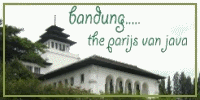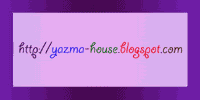September 17, 2008
Indonesia [chapter 1]: a necklace of equatorial emeralds
Posted by ... at Wednesday, September 17, 2008Indonesia is often referred to as the world's largest archipelago, a name reflecting his aptly 17000, or islands covering over 5000 km (about 3200 miles) east of Sabang, in northern Sumatra to Merauke in Irian Jaya. If you superimpose a map of Indonesia over one of Europe, you will find that stretches from Ireland to Iran; compared with the United States, which covers the area from California to Bermuda.
There are eight major islands or island groups in this huge chain. The largest land consist of Sumatra, Java, Kalimantan (Borneo), Sulawesi (Celebes) and Irian Jaya (the western half of Papua New Guinea). The smaller islands are divided into two main groups: Molluccas the northeast, and lesser Sunda chain east of Bali. Bali is a unique island, which for a number of reasons can be put in a class by itself.
Bahasa Indonesia is the official language. English is frequently used in trade. The people are predominantly Muslim, minority religious groups are Christians, Hindus and Buddhists.
Lovers of the mountain is much to enjoy in Indonesia. A large chain of volcanoes, the Bukit Barisan, runs the entire length of Sumatra. In the west coast, the mountains fall abruptly to the sea, while the east to ease gradually to the plains in a wide coastal strip of mangroves. Vegetation volcanoes dresses also dramatically increased in the Banda Sea, Ternate and Maki. Many of the volcanoes are still active, constantly latent and sometimes violent eruption, although geological stations continually track assets and give notice if they are not safe to climb. Mount Merapi in Central Java is the favorite for climbers, despite being one of the most active in the archipelago.
Mountain Lakes are also abundant in many dormant craters of volcanoes, the most famous of these objectives is Lake Toba in the mountains north of Sumatra. This mountain lake covers an area four times the size of Singapore. In Kalimantan, the water moves freight and passengers up and down the major rivers: Mahakam, Barito, Kapuas and Kahayan. The mountainous island of Flores is famous for its many colored volcanic lakes, known as Keli Mutu. The three lakes are located in a narrow range of group and dark red to turquoise.
Located between two bio-geographical groups - Asia and Australia - the flora and fauna of the archipelago is also highly idiosyncratic. Species that are found nowhere else on earth have flourished in certain areas, including the famous Komodo dragon on the island of the same name. Also in abundance are rare flowers, including exotic orchids, unusual insects, birds of paradise and many indigenous spices such as cloves, cinnamon, nutmeg, mace and many more.
Labels: journey, resort, tourism area
0 Comments:
Subscribe to:
Post Comments (Atom)









